Imagine coming home to a wagging tail and a loving gaze, without the echoing howl that wakes your neighbors at midnight. While some dogs vocalize their emotions with a dramatic flair, others are content to let their eyes and tails do the talking.
If you’re someone who values peace and quiet but still dreams of a loyal canine companion, you’re in the right place. Not all dogs are born howlers. Some breeds are naturally more reserved, preferring soft sighs and gentle cuddles over howling at sirens or the moon.
Whether you’re living in an apartment with noise restrictions or simply prefer a quieter lifestyle, these mellow pups can bring joy to your life, minus the midnight concerts.
We’ll explore dog breeds known for keeping their vocal cords in check. They’re not just quiet—they’re affectionate, trainable, and incredibly loyal. From city dwellers to suburban families, these low-noise companions are ideal for anyone seeking the softer side of dog ownership.
Let’s dive in and meet the breeds that prove silence really is golden.
Dog Breeds That Never Howl
1. Bernese Mountain Dog
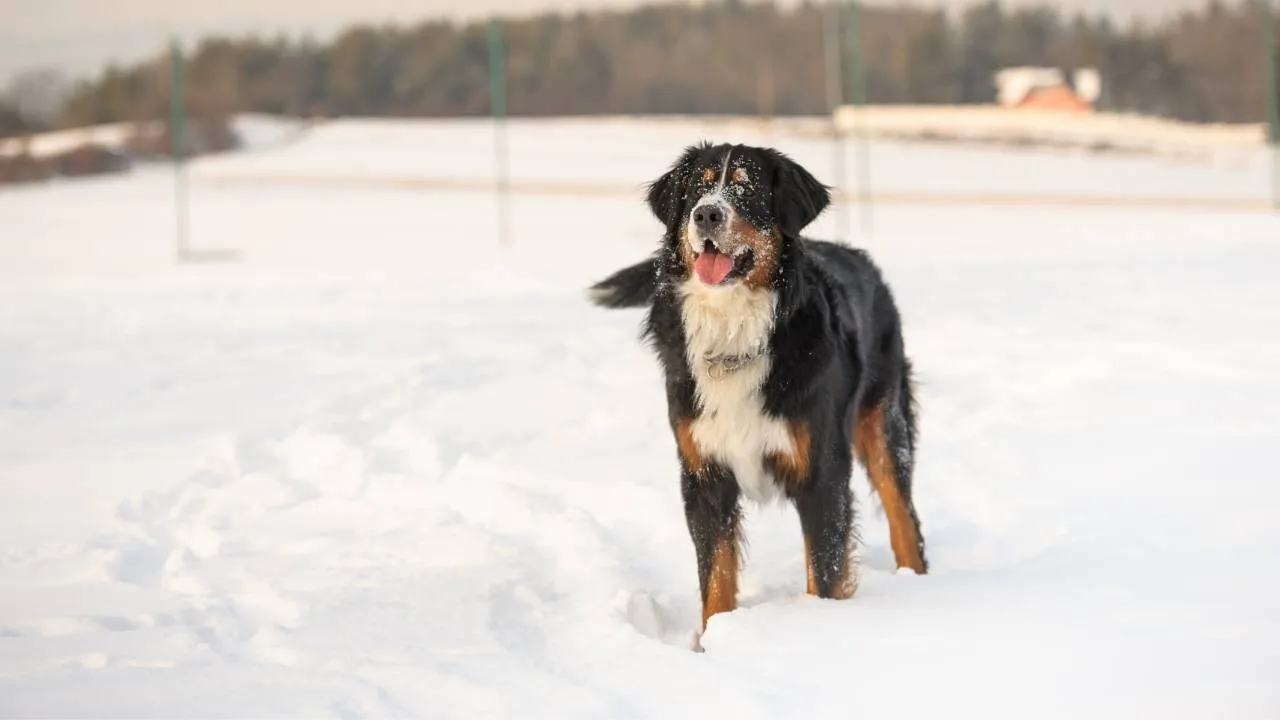
The Bernese Mountain Dog hails from Switzerland, originally bred to help with farm work in the Alps. You’d think a dog tough enough to pull carts and herd cattle might be vocal about it—but nope. The Bernese is more likely to greet you with soulful eyes and a wagging tail than a howl.
In fact, these large dogs are famously low-volume companions. They’re the strong, silent type—like the mountain-dwelling introvert of the canine world. Berners are gentle, affectionate, and massive. We’re talking 70–115 pounds of pure cuddle. They love kids, tolerate cats, and don’t demand to be the center of attention at every party.
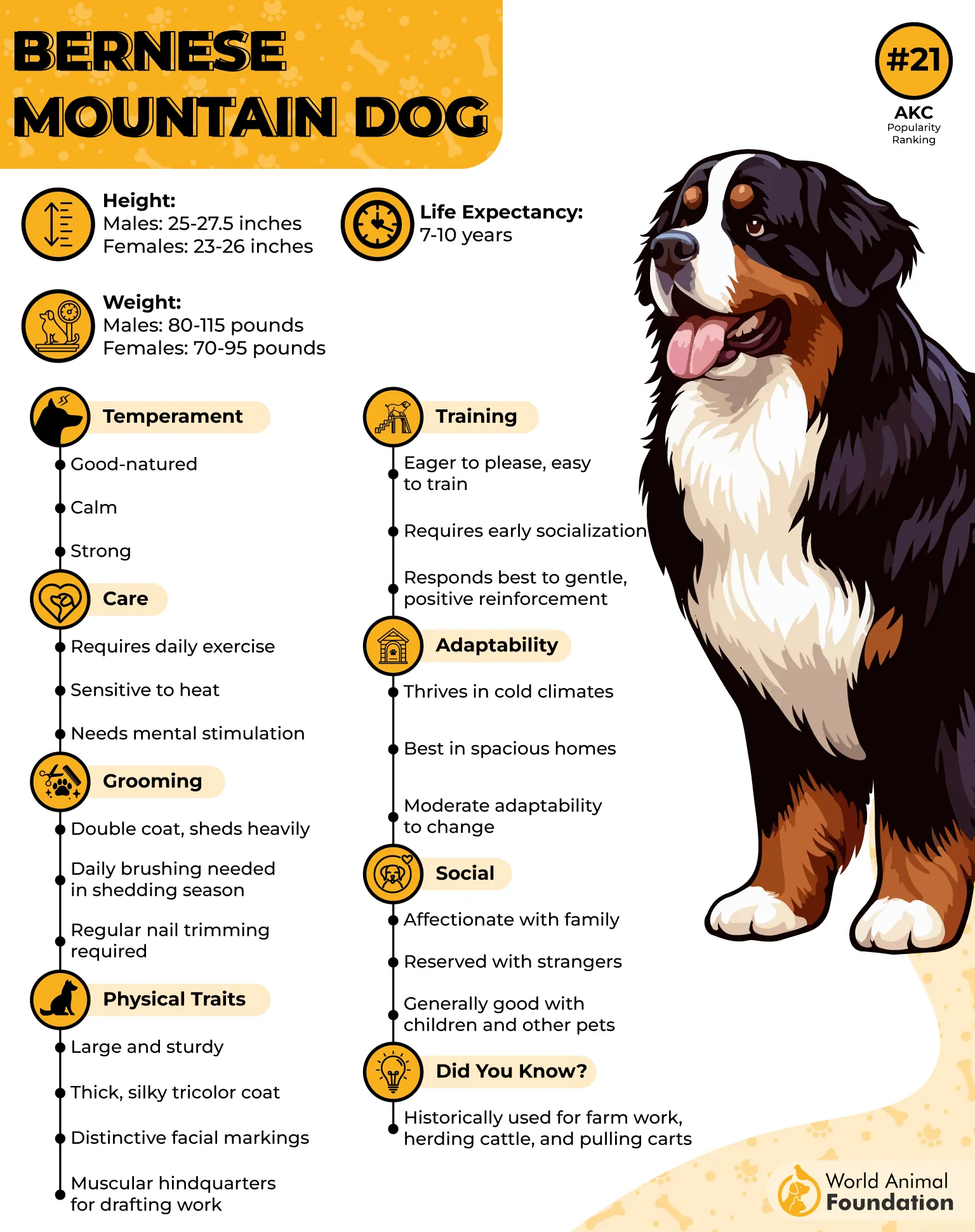
They’ll happily be your shadow, your footrest, and your emergency snack cleaner (because they will eat that dropped popcorn before you can say “sit”). They’re the kind of dog that says “I love you” not with howls, but with a quiet presence that fills a room.
Why So Quiet?
These dogs are not wired for howling. Unlike Huskies, who seem to have missed the memo that they’re not wolves anymore, Bernese Mountain Dogs prefer to express themselves through subtlety—leaning on you like a warm, furry weighted blanket, or offering a paw with theatrical sincerity. They’ll bark occasionally (hey, they’re still dogs), but howling? That’s beneath their Alpine dignity.
2. Cavalier King Charles Spaniel
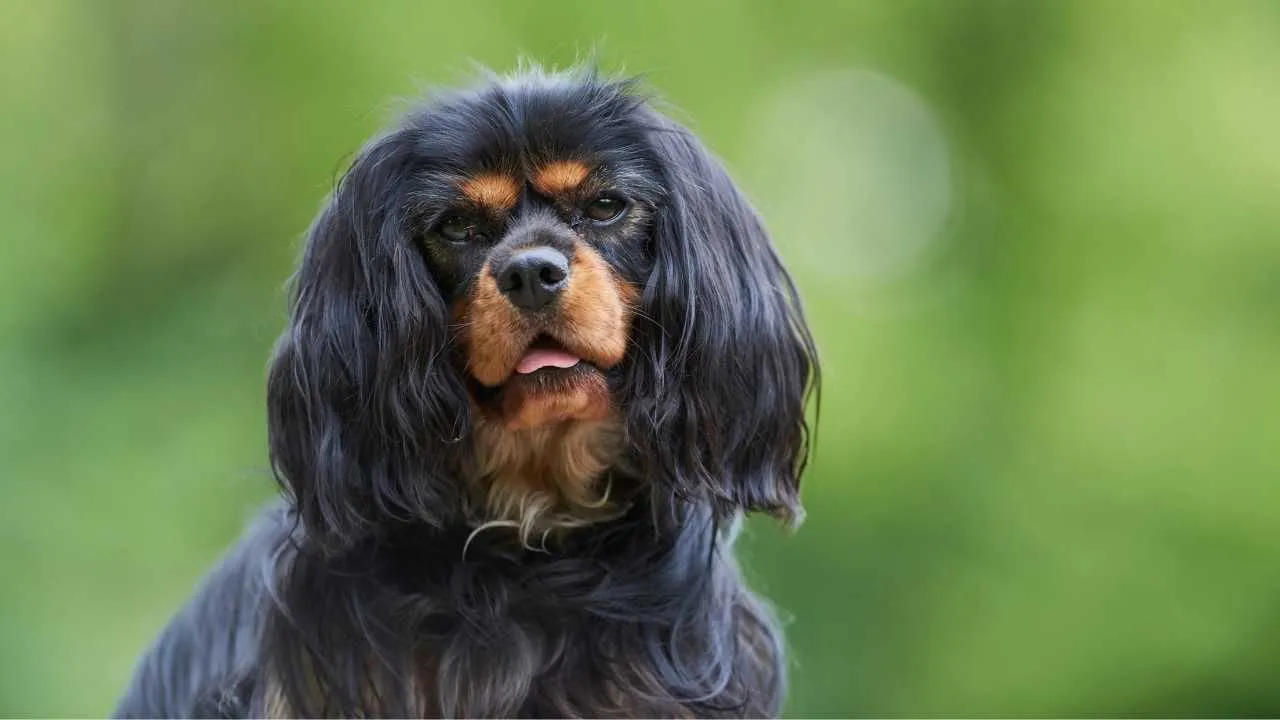
Let’s get something out of the way: the Cavalier King Charles Spaniel didn’t earn its royal name by accident. This breed was literally bred to warm the laps of English nobility, and they’re still rocking that lifestyle centuries later.
Cavaliers are small dogs, typically weighing between 13-18 pounds and standing around 12-13 inches tall at the shoulder. They have a well-balanced, sturdy, and graceful body, making them equally at home on a royal lap or scampering around the yard.

Their face is gentle and sweet, with a slightly turned-up nose. Their long, well-feathered drop ears frame their face perfectly, contributing to their endearing expression. Their tail is well-feathered and usually carried happily, often wagging with an enthusiasm that could power a small wind turbine.
So, About That Howling…
Here’s the great news: howling is not in the Cavalier’s vocabulary. They’re polite, proper, and far more likely to whimper adorably or bark softly than burst into a dramatic midnight serenade. No “Arooo!” here. They’re more “Excuse me, I noticed you left the room. Is everything alright? Can I come too?”
Now, let’s talk about their one big sound-related weakness: separation anxiety. Cavaliers love their humans with the intensity of a teenage romance. Leave the room, and you might get a little bark. Leave the house, and they might get a bit dramatic.
Cavaliers are smart, eager to please, and alarmingly good at getting what they want. With a couple of head tilts and a soulful gaze, they can convince even the toughest human to hand over the last piece of bacon.
3. French Bulldog
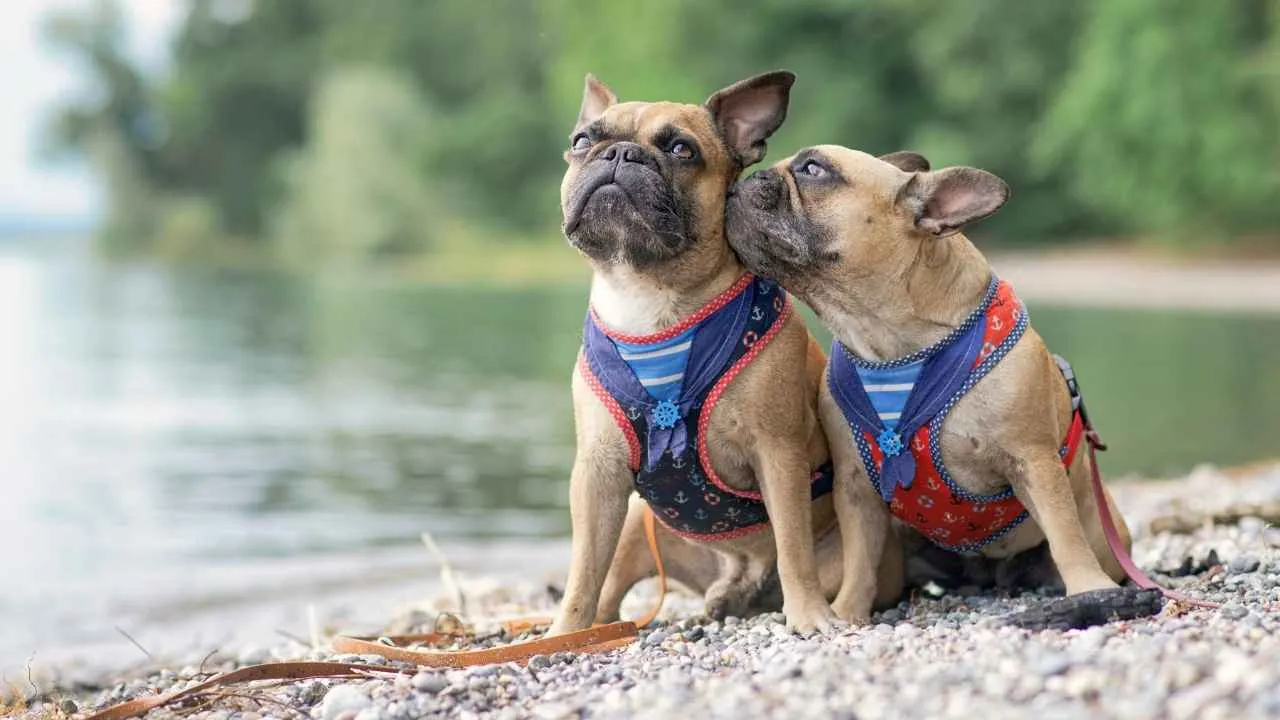
If you’re looking for a dog that doesn’t howl, doesn’t bark much, and does snore like a grandpa in a recliner after Thanksgiving dinner—say bonjour to the French Bulldog.
The French Bulldog, affectionately called the Frenchie, is basically the canine version of your effortlessly cool, always-chill friend. With their iconic bat-like ears, wrinkly face, and compact, muscular build, Frenchies are both adorable and unmistakably stylish.
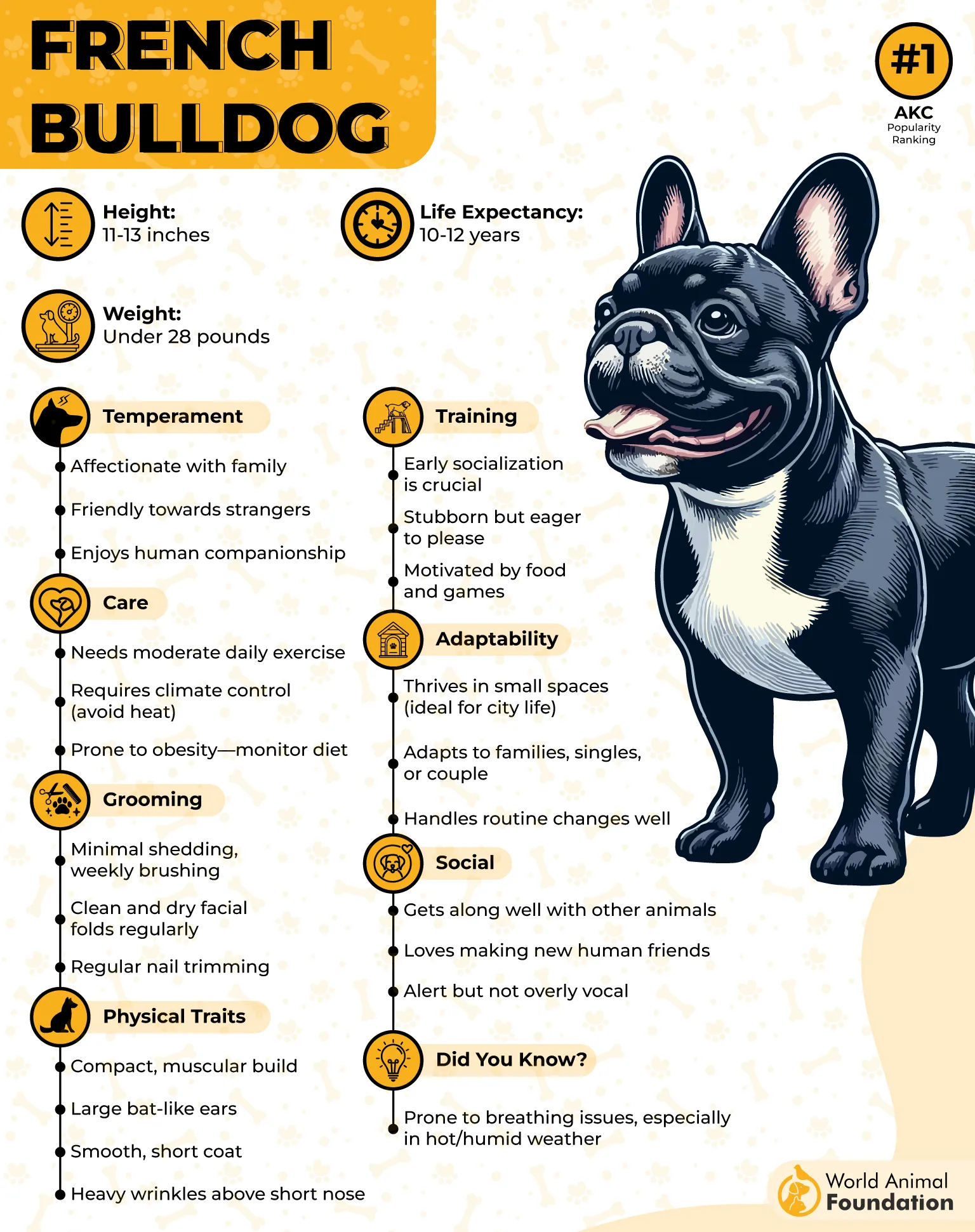
Frenchies are the go-to dog for apartment dwellers, city folks, and people who like their dogs like they like their WiFi: fast, reliable, and quiet. They’re not into dramatic performances. In fact, most French Bulldogs treat howling the way most people treat doing taxes—they avoid it at all costs.
They’re also loyal companions who bond closely with their humans, sometimes earning them the nickname “velcro dogs.” While not the best swimmers or marathon runners, Frenchies make up for it with heart-melting snuggles and the kind of side-eye that says, “I’m judging you lovingly.”
Most of the “noise” from a Frenchie sounds like someone trying to blow up a balloon with a clogged nose. Their symphony of snuffles, snorts, and snores is oddly comforting. It’s like living with a tiny, flat-faced piglet that really, really loves you.
They don’t bark just to hear themselves talk, and they don’t need to scream for attention—they know they’re already the center of your universe.
In short? Low-maintenance, lovable, and loaded with personality, French Bulldogs bring big joy in a small, sturdy package.
4. Basenji
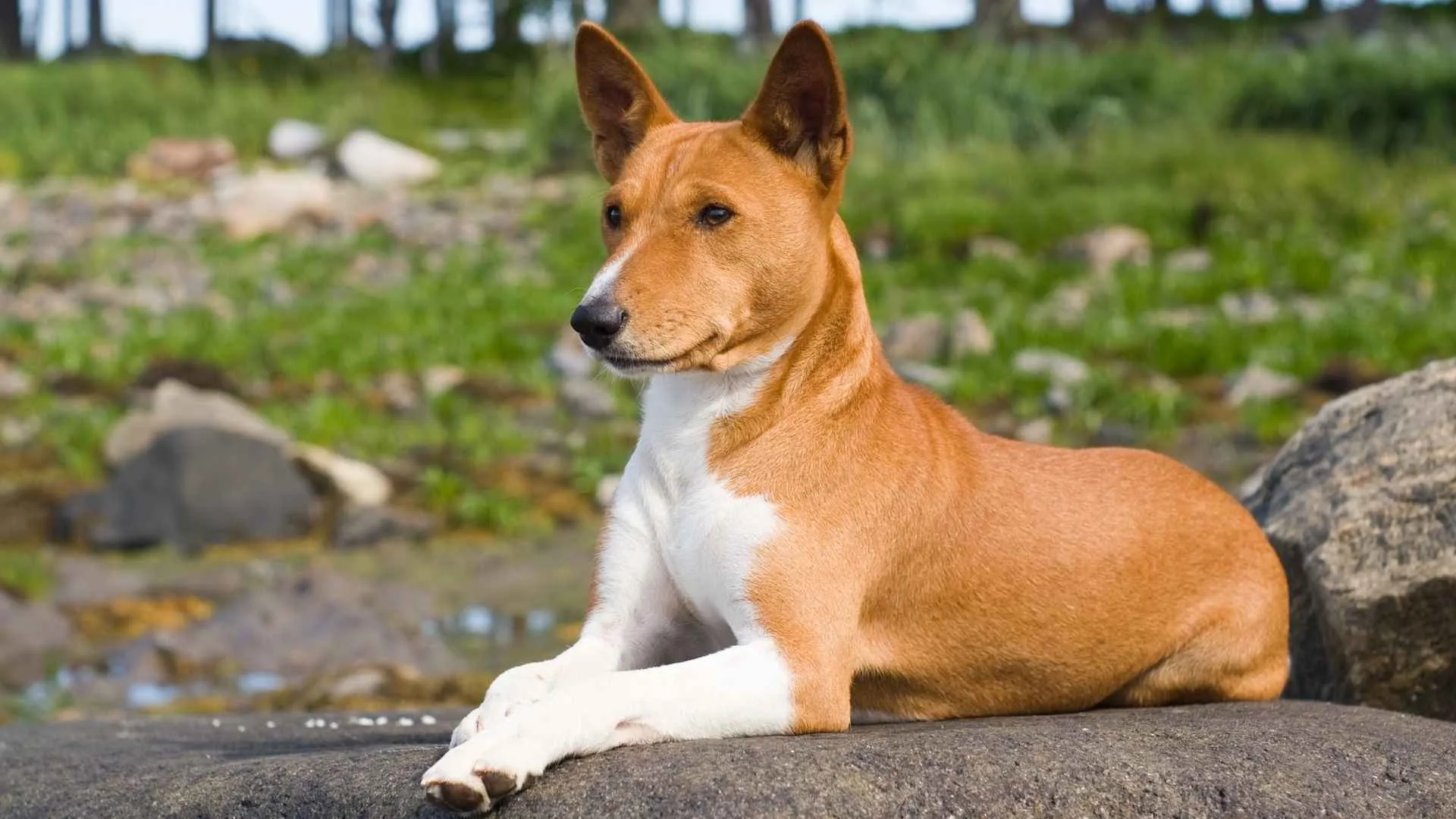
Now this one’s special. The Basenji isn’t just a dog that doesn’t howl—it’s a dog that can’t bark. That’s right. This isn’t just a polite pup, it’s a biological phenomenon.
Basenjis are medium-small with a lean, muscular build, often described as elegant. Their most notable features are their tightly curled tail, alert, erect ears, and a forehead that often sports charming wrinkles when they’re alert. They have short, fine, glossy coats that come in various colors, often with white markings on their chest, feet, and tail tip.
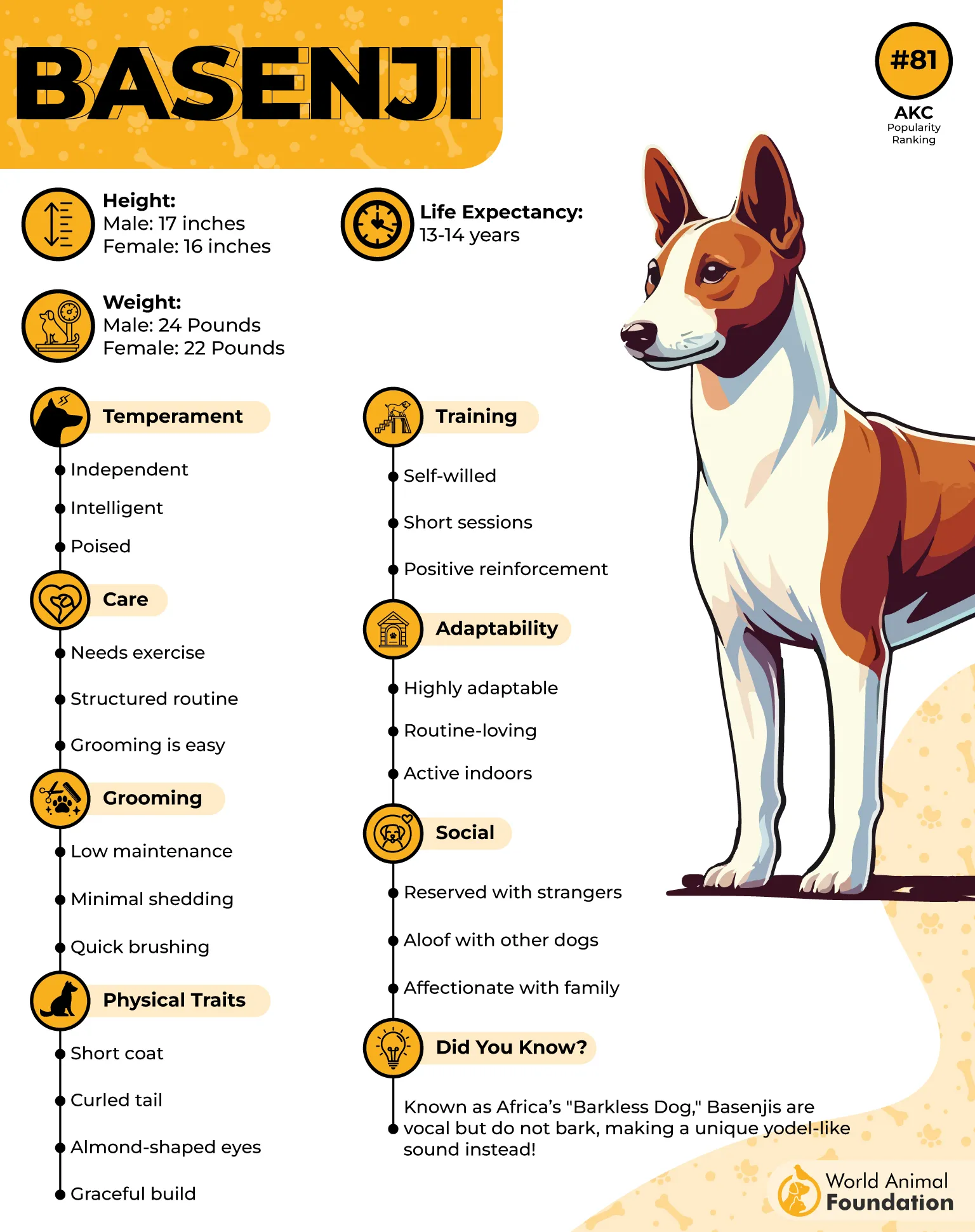
Basenjis are often called the “barkless dog”, thanks to the unique shape of their larynx. It’s not broken—it’s just different. It physically prevents the traditional “woof” from escaping. But silence doesn’t mean muteness.
Oh no. They yodel.
Yes, yodel.
These quirky canines make a sound that’s somewhere between a singing goat and a giggling alien. It’s officially called a “baroo,” but most owners just refer to it as the Basenji yodel, and frankly, it’s adorable and deeply weird in the best way.
Everything about the Basenji is cat-like: they groom themselves, they’re independent, they’re curious, and yes, they may ignore you sometimes unless snacks are involved, says Purina. They’ll tilt their head, stare into your soul, and yodel softly like they’re narrating your life in dog-Elvish.
5. Borzoi
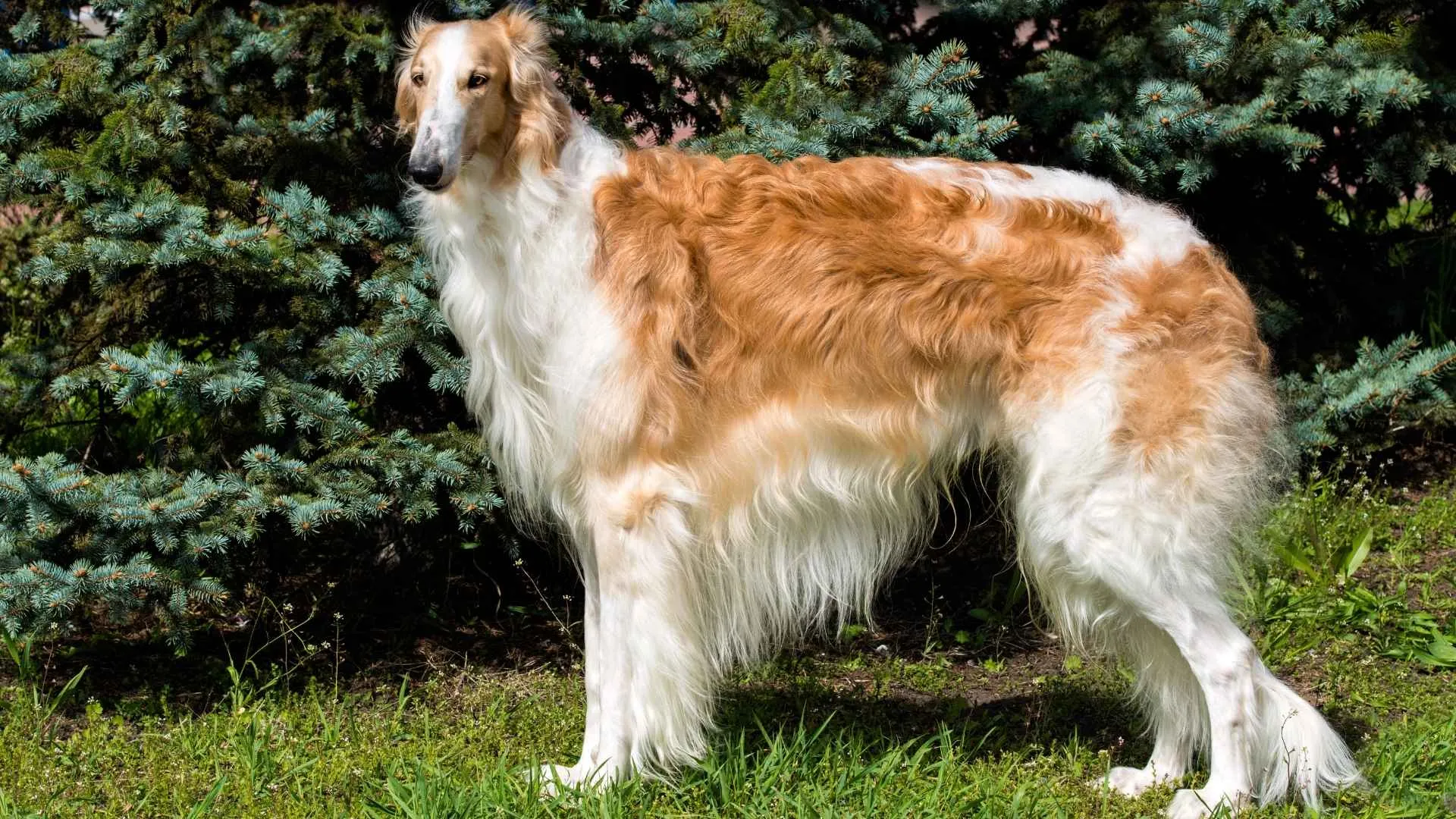
If James Bond were a dog, he’d be a Borzoi—refined, quiet, lightning-fast, and just mysterious enough to make you wonder if he speaks five languages when you’re not looking.
Borzoi are very large, slender sighthounds with an incredibly elegant and graceful build, characterized by a distinctive arched or “roach” back. Their most striking feature is their long, narrow head (often described as “Roman-nosed”) and their luxurious, silky, flowing coat.
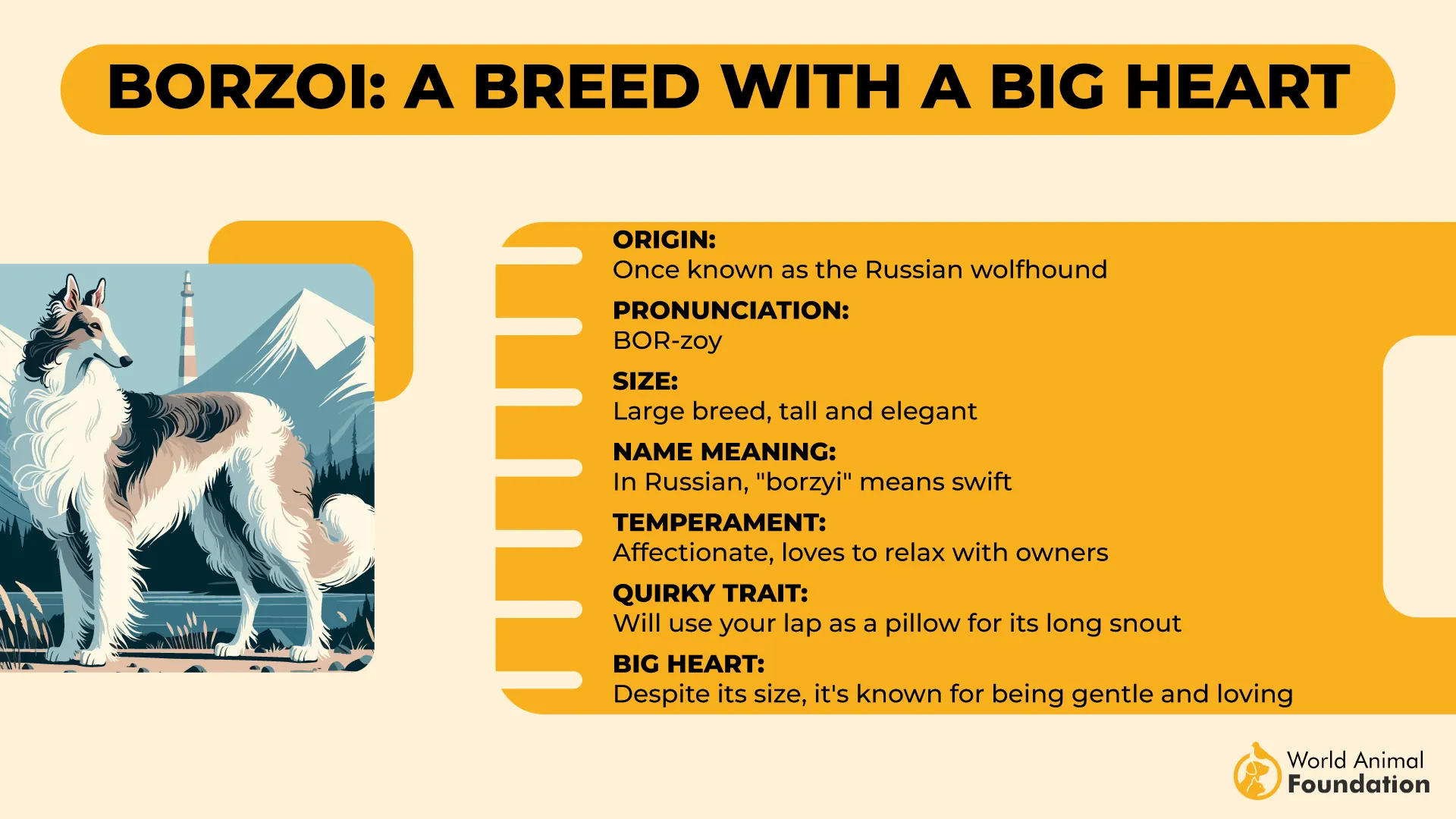
But don’t let their dramatic appearance fool you—they’re among the quietest dogs you’ll ever meet. These Russian sighthounds were bred for speed, not sound. They’ll chase a squirrel at warp speed, then return to the couch and curl up like a very expensive fur throw that sighs occasionally.
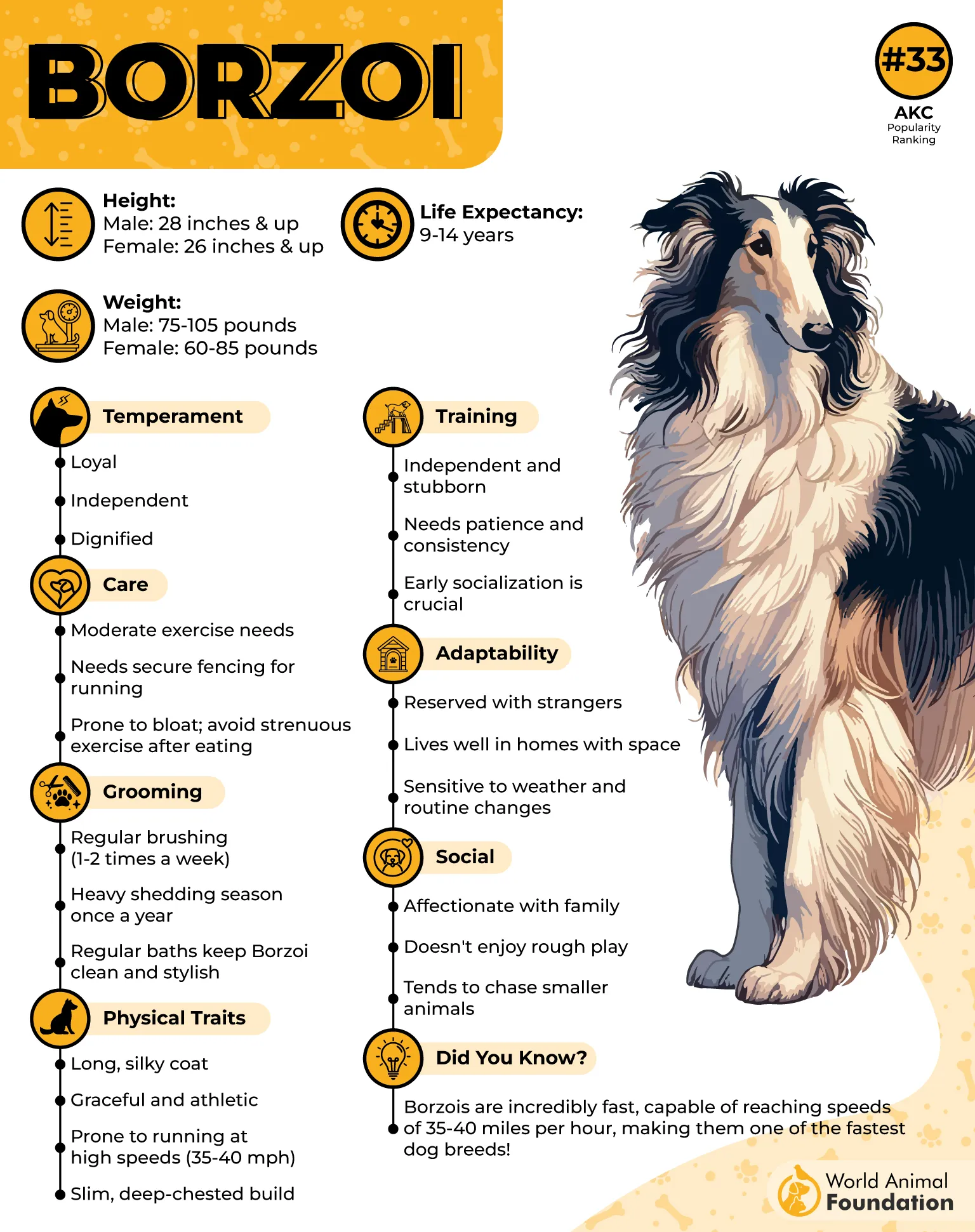
They don’t howl. They don’t bark just because they heard a leaf fall. They observe… with judgment… in silence. Borzois are cool customers. They’re calm, independent, and somewhat aloof. They love their people but won’t smother you with constant noise or demands.
The most dramatic sound you might hear from a Borzoi is a long, exaggerated sigh when their nap is interrupted. Or when you try to get them to go outside in the rain. (How dare you.)
Watching a Borzoi sprint at full speed and then immediately flop on the floor like an exhausted Victorian heroine is peak entertainment. They’re like introverted supermodels—stunning in motion, dramatic in rest, and silent the whole time.
6. Scottish Deerhound
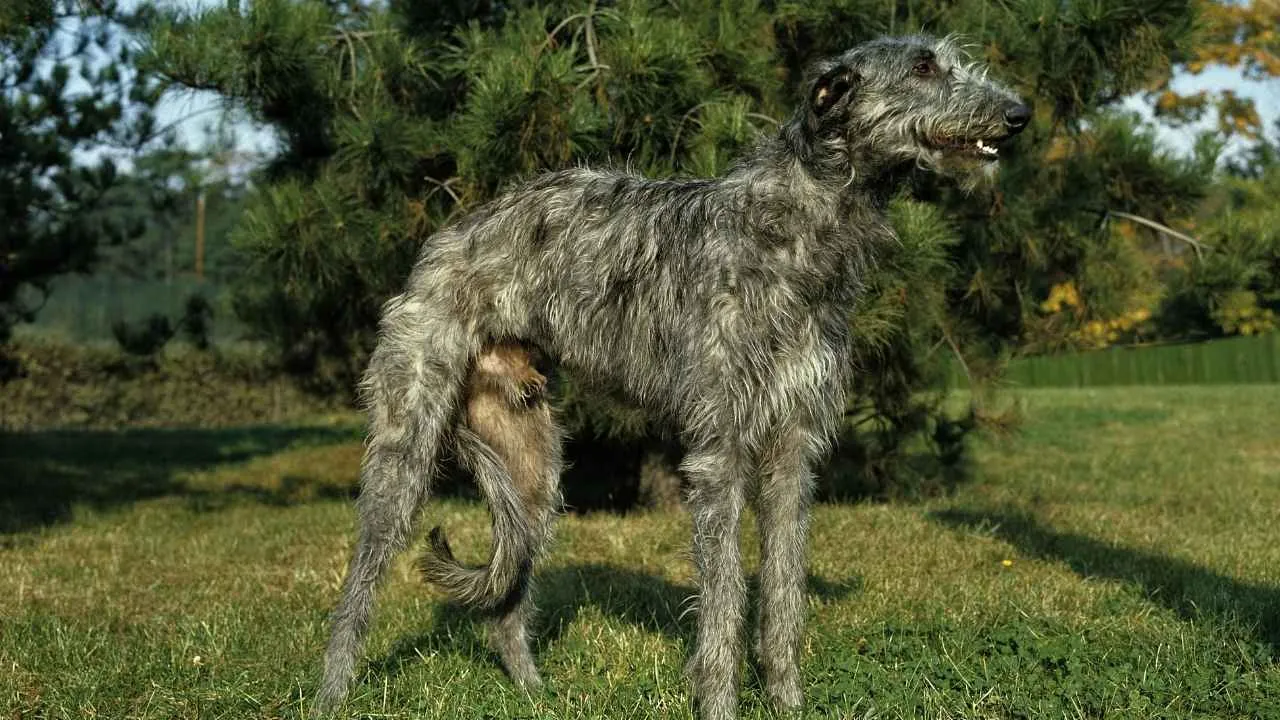
Say hello to the Scottish Deerhound—a breed that looks like a medieval knight’s sidekick and behaves like a well-mannered guest at a royal tea party.
With their wiry coats, long limbs, and noble presence, Deerhounds are often mistaken for shaggy sculptures. But despite their imposing size, these dogs are gentle giants—gracious, soft-spoken, and surprisingly low-energy indoors.
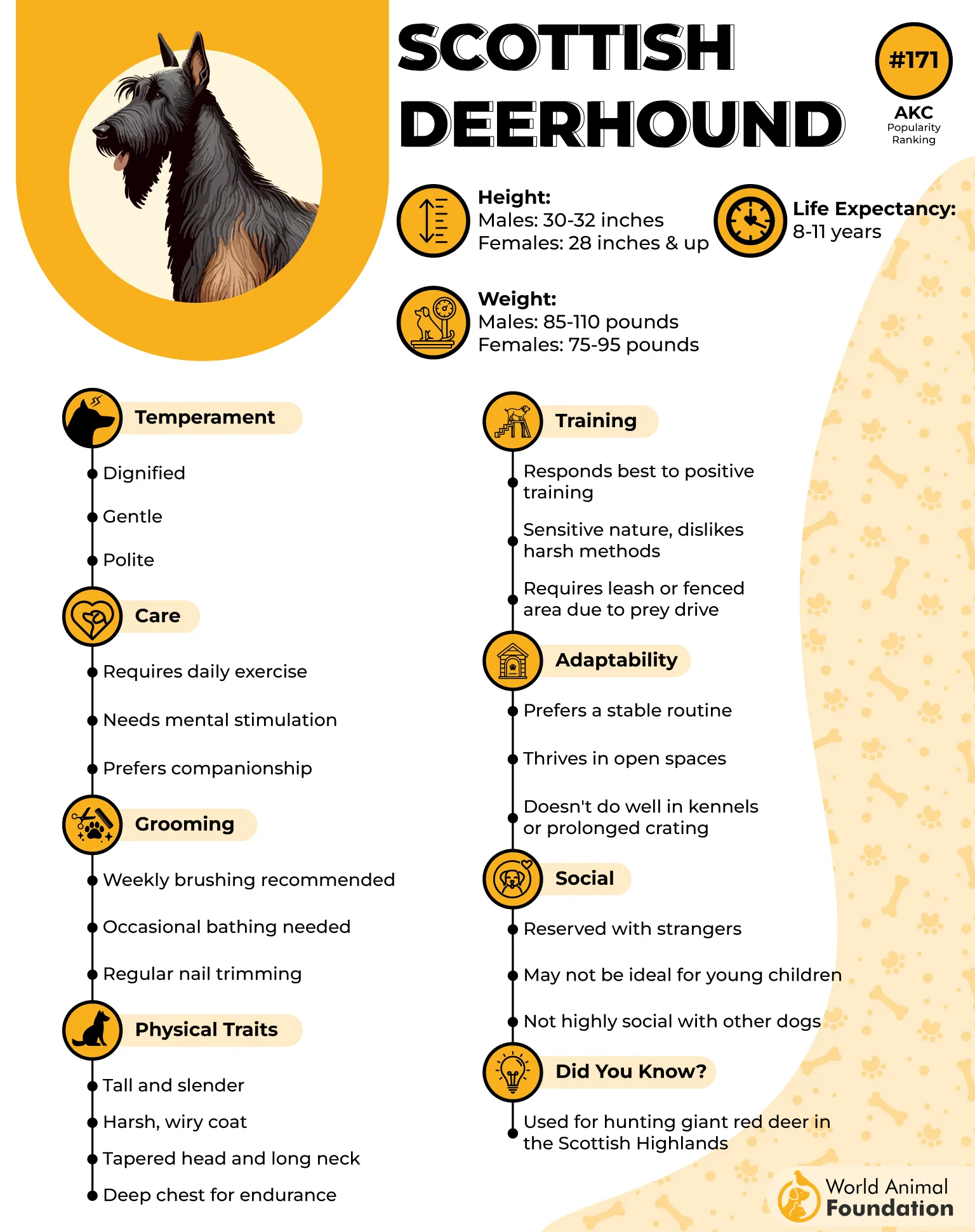
The Scottish Deerhound temperament is typically gentle and friendly, though some individuals might be a bit reserved, while others are more outgoing.
Once they reach maturity, these calm dogs are quite laid-back, often content to spend much of their day napping on the couch or bed. However, their strong natural prey drive means you’ll need to be extra careful with smaller household pets like cats.
And their attitude toward howling? “Oh no, that would be uncouth.” Deerhounds are quiet by nature—not because they’re shy, but because they’re dignified. They see no reason to shout when a polite presence will do.
These dogs adore their humans and are famously affectionate, but they express it without fanfare. No yappy barks. No midnight songs. Just long, loving stares and the occasional nose-nudge for more ear scratches.
7. Shiba Inu

If a dog could be a meme, it would be the Shiba Inu. (Actually, it is a meme—hello, Doge!). This little fluffball looks like a fox, acts like a cat, and sounds like… well, not a typical dog.
This Japanese dog is well-known for its distinctive pointed muzzle, upright triangular ears, and being a small, compact dog, typically weighing between 17–23 pounds.
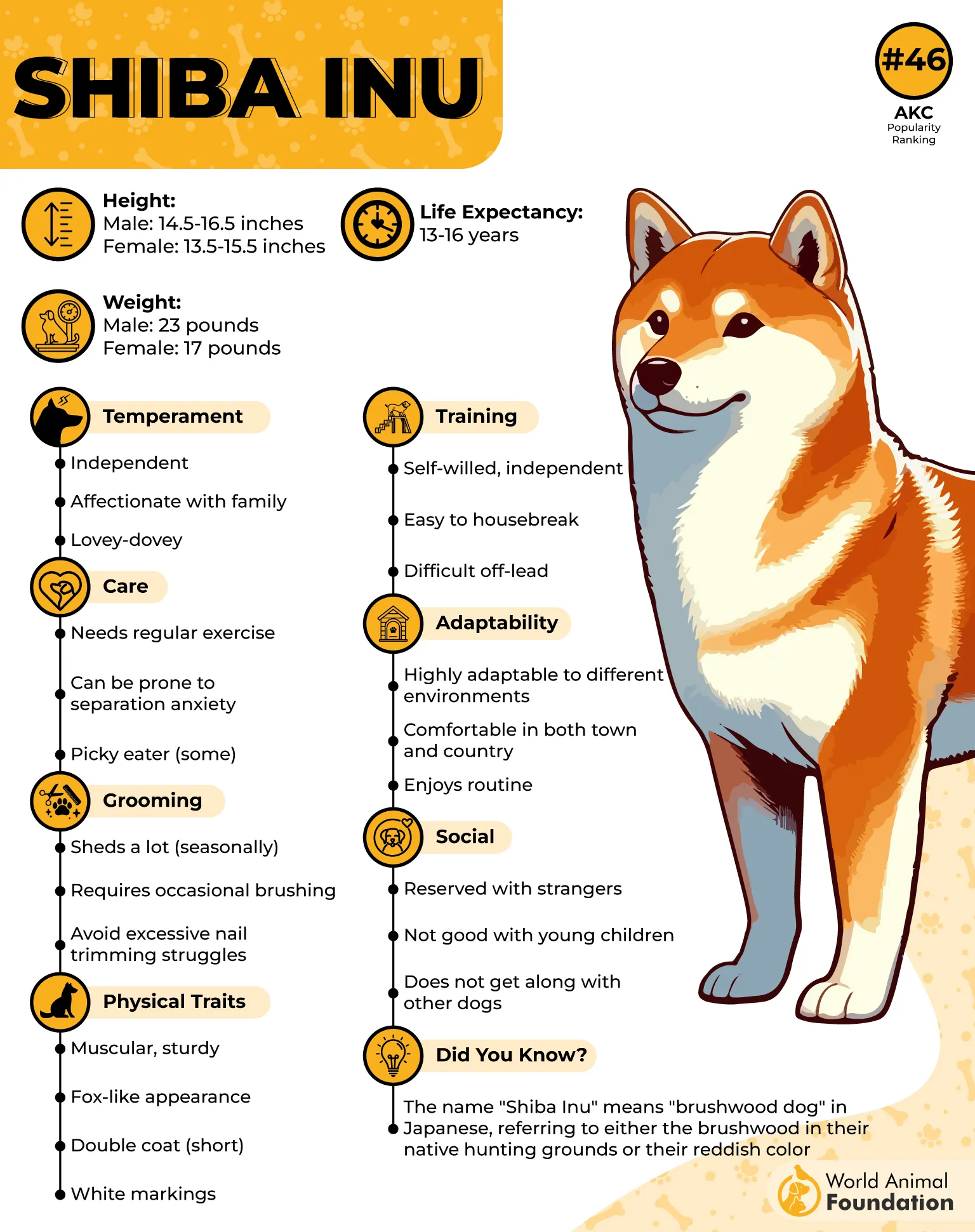
Shibas are fiercely independent, dignified, and extremely clean, like a roommate who never talks but always does the dishes. They’re not ones to follow you from room to room begging for attention. They’re more likely to shoot you a judgmental glance from their sunspot and continue napping.
When it comes to barking? Shibas don’t waste their breath. They bark if they need to—like when someone’s at the door or their dinner is late (the horror!), but they’re not into noisy drama… at least not the barking kind.
Here’s where it gets fun: If they’re really unhappy, like getting their nails trimmed or being asked to do something deeply offensive (like… coming inside when they don’t want to), they unleash the infamous “Shiba Scream.”
It’s not a bark. It’s not a howl.
It’s a high-pitched, blood-curdling shriek that sounds like someone’s being exorcised at the vet’s office.
But hey, they save it for special occasions. Most of the time, your Shiba will glide around the house in glorious silence, judging everyone and looking fabulous.
8. Irish Setter
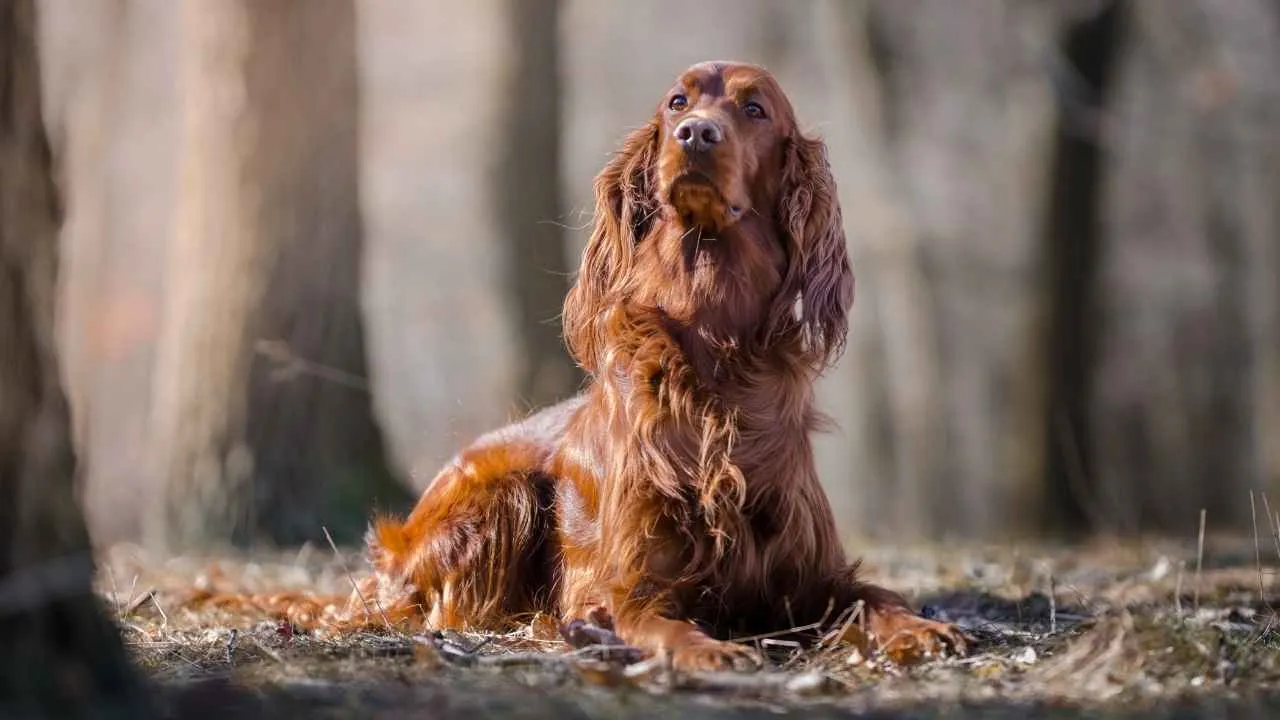
The Irish Setter is often called one of the most beautiful dog breeds, known for their lively personality and suitability as a family pet. These large dogs have long, powerful legs, making them incredibly swift and agile within the sporting group, according to WebMD.
Irish Setters are very friendly and sweet-natured, though they also have a mischievous and playful side. As natural hunters and trackers, don’t be surprised if your Irish Setter “searches for treasures” in your home, including your closets or drawers!
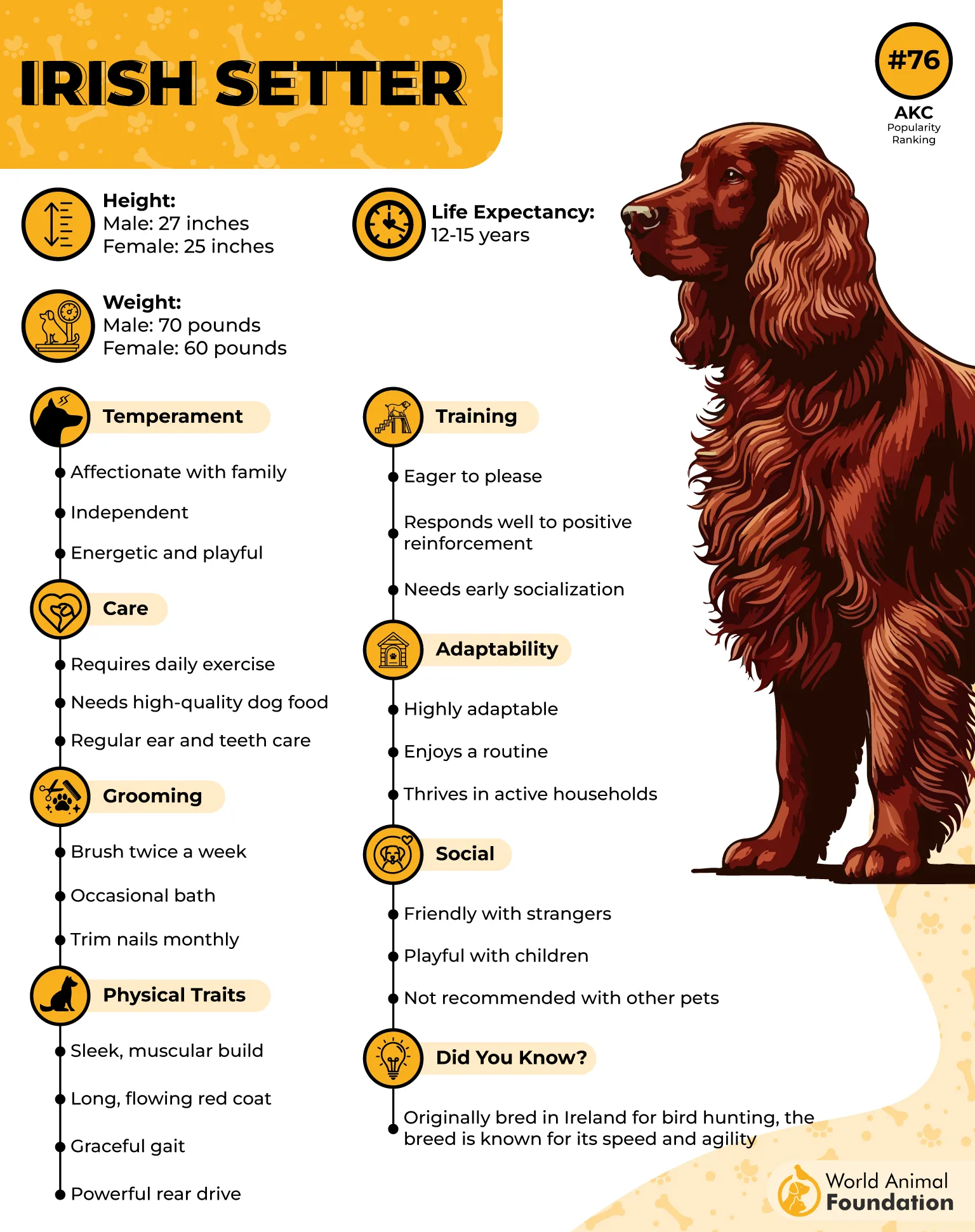
Irish Setters are the life of the party—but surprisingly, they don’t need to yell about it. Despite being lively and playful, Irish Setters are not big on barking or howling.
Because of their high energy, Irish Setters thrive in bigger homes with a garden or yard where they can run freely. They need substantial exercise, ideally two hours or more daily, which should include plenty of running and playing.
They are intelligent and affectionate, but their training requires patience due to their occasional stubbornness and desire to have their way.
These dogs are people-lovers. They thrive on companionship and can get lonely if left alone too long, but rather than howling like a banshee, most Irish Setters will just look a little sad and sigh dramatically. (Some will carry your shoes around for comfort… or chew them, depending on their mood.)
9. Shih Tzu
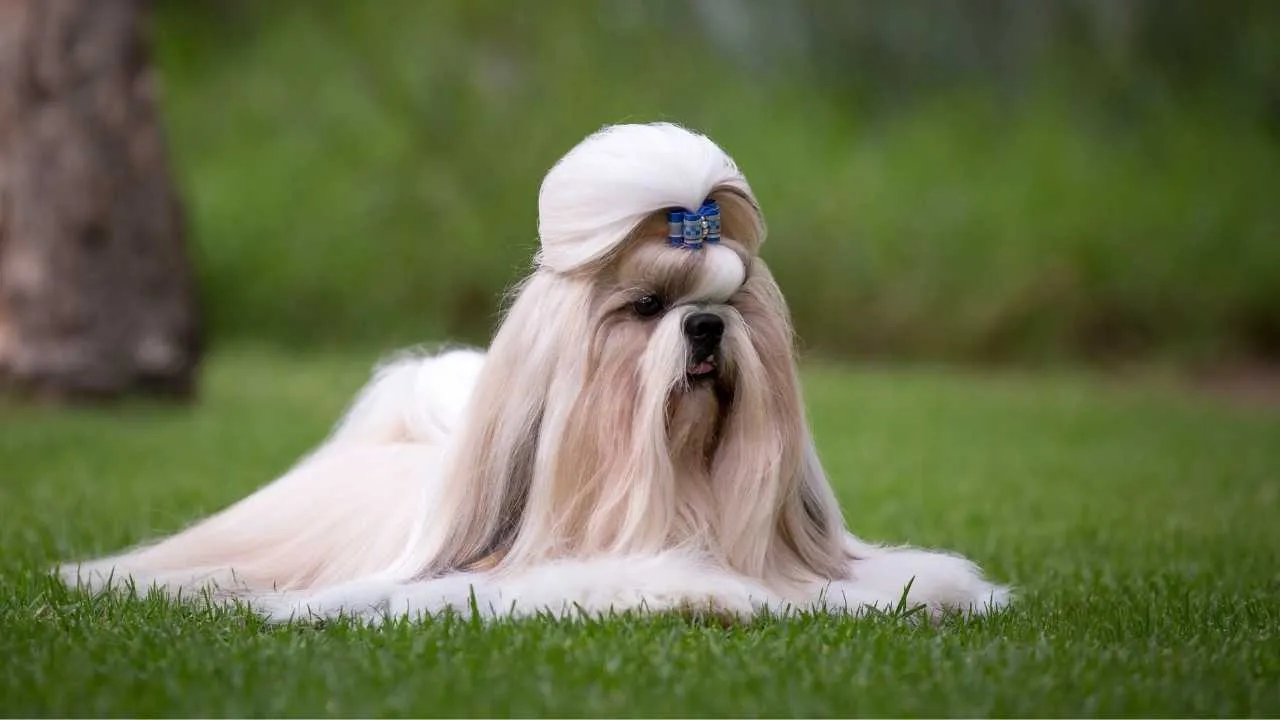
Ah, the Shih Tzu—a dog so regal, they once had emperors wrapped around their tiny, furry paws. Bred to sit on thrones (okay, laps), these pups have mastered the fine art of being adored without being annoying.
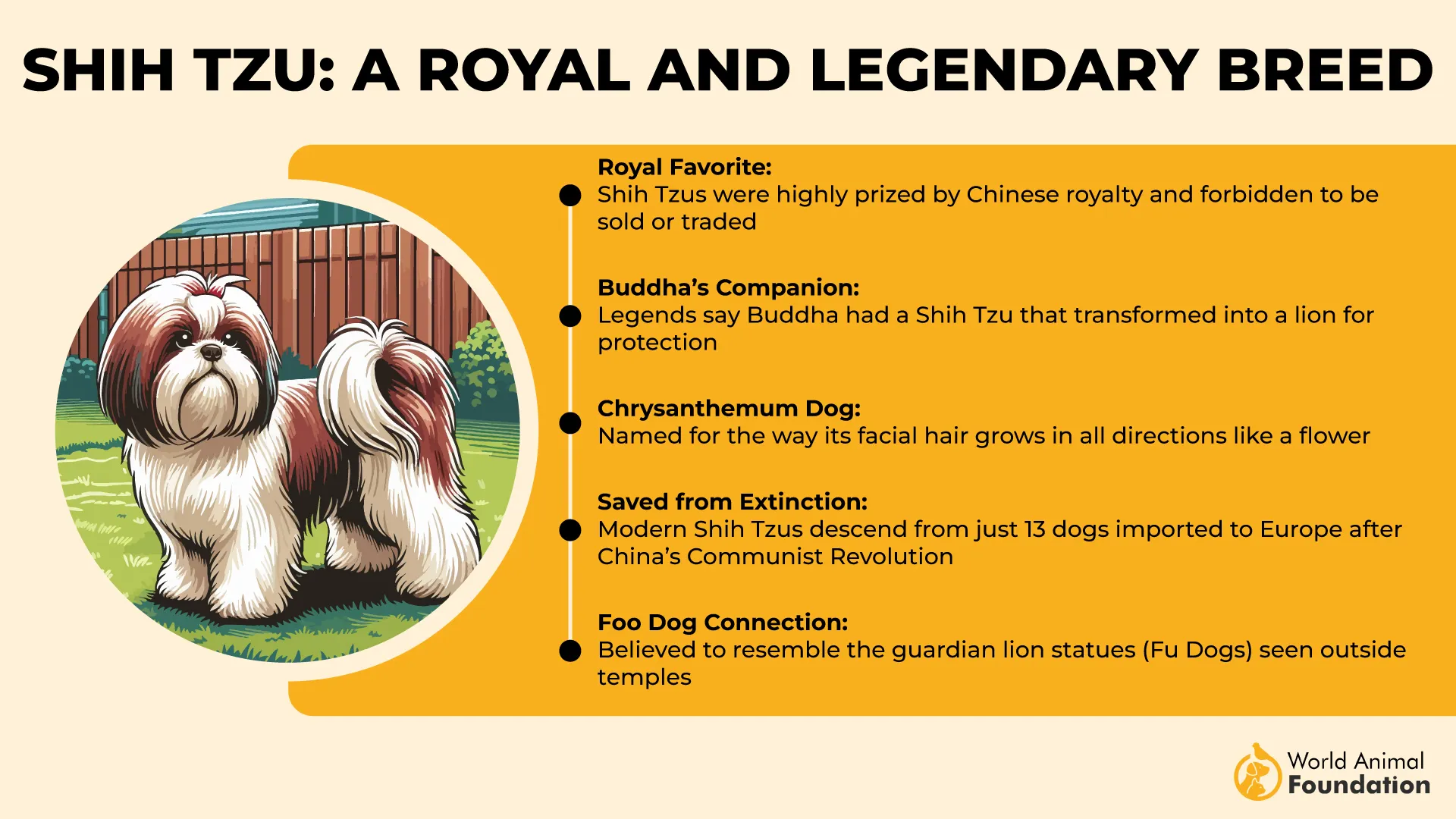
The Shih Tzu gets its name from a Chinese word meaning “lion,” and these small dogs certainly have a unique appearance. They’re recognized by their long, silky coats, short legs, and big, expressive eyes.
The Shih Tzu is not a howler. They’re not even particularly barky—unless someone dares interrupt their nap or the mail arrives with suspicious enthusiasm. Otherwise, these small dogs are calm, content, and more interested in your affection than in making noise.
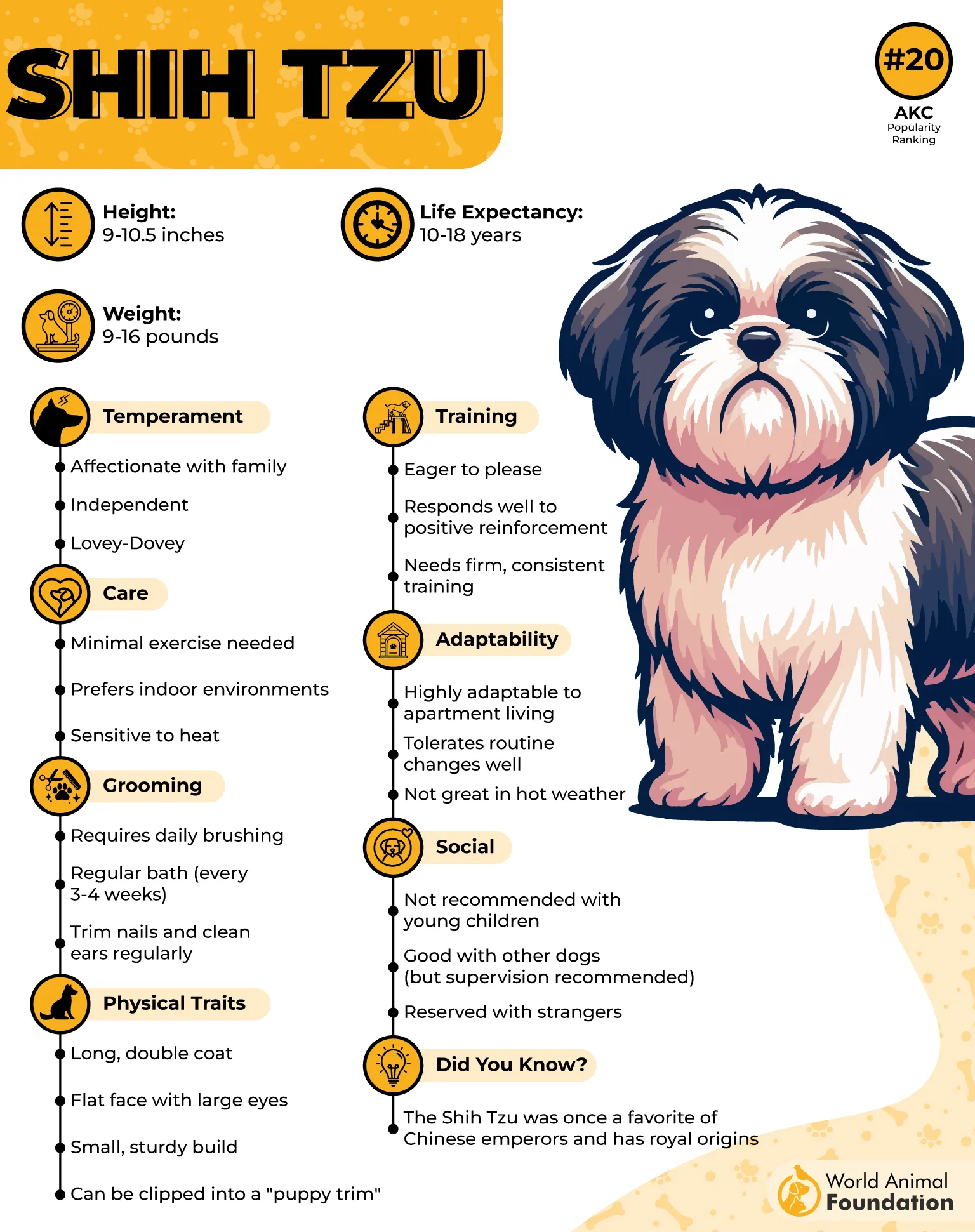
They’re like your chill best friend who’s always up for a movie night but never the one to start drama. Shih Tzus are known for being extremely affectionate, good with families, and pretty adaptable. They’re also super clean (they’ll practically groom themselves if you let them), and they tend to get along with everyone—even your grumpy cat.
10. Saluki
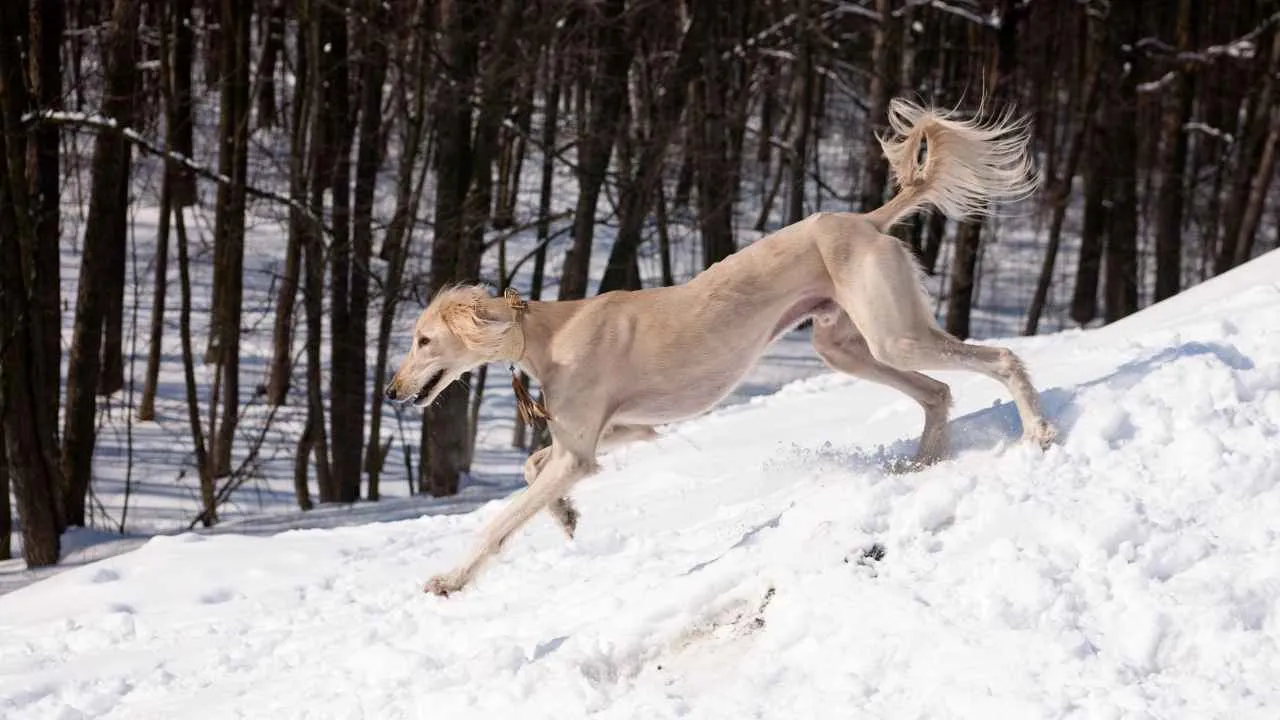
If a Greyhound is a luxury car, the Saluki is a solar-powered stealth jet. Elegant, ancient, and endlessly graceful, the Saluki is one of the oldest dog breeds in the world—and possibly one of the quietest.
The Saluki, an ancient sighthound breed from the Middle East, was once revered as a divine gift. These quiet and dignified dogs are medium to large with long, slender bodies and possess short, smooth, silky coats often feathered around their ears and tail.
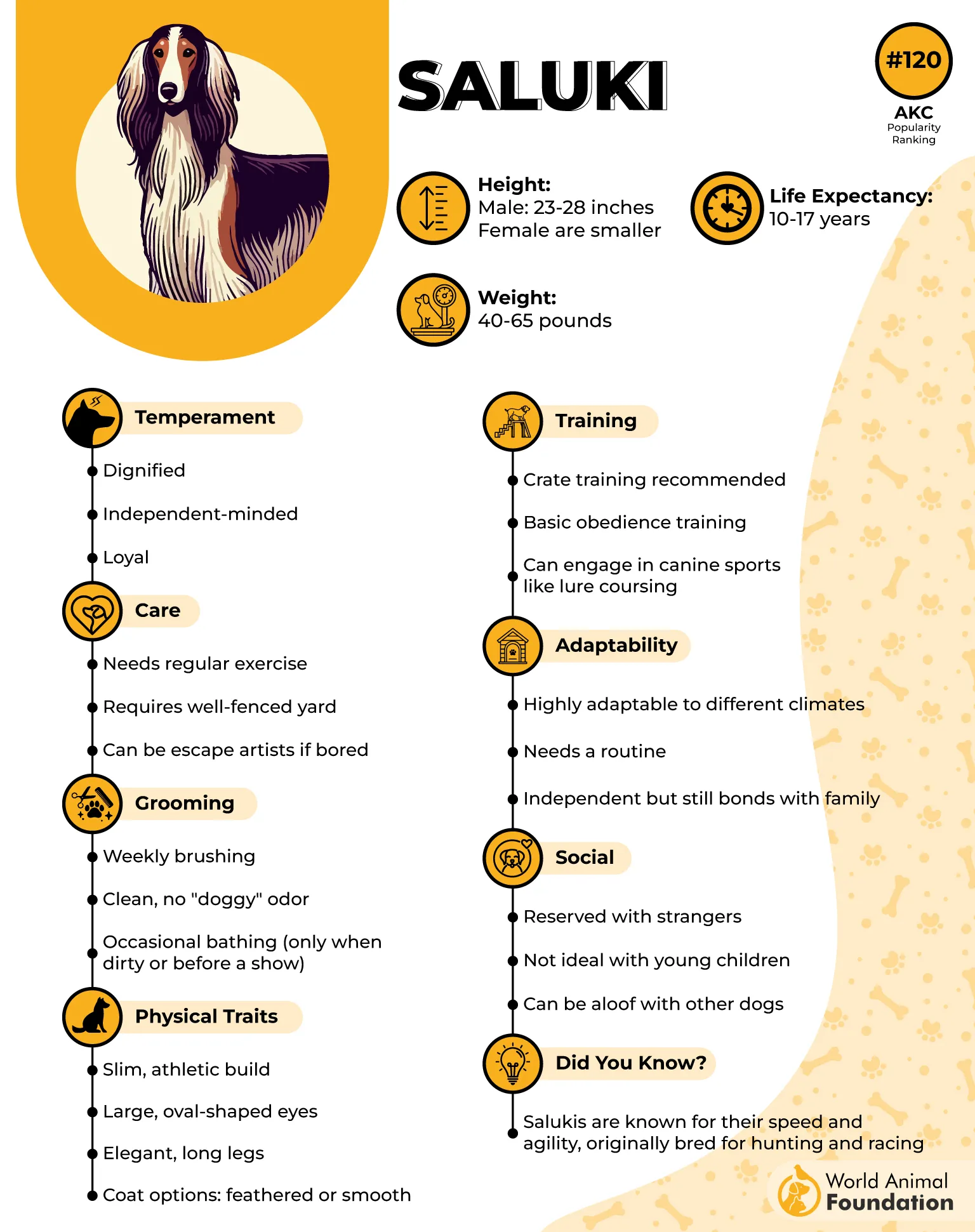
Salukis are reserved, calm, and highly refined. This is not the dog that jumps on guests or barks at shadows. They might not make a sound all day. These desert hounds were bred for hunting with vision and speed, not for sounding an alarm. Their motto? “Speak softly and nap beautifully.”
While Salukis aren’t aggressive enough to be guard dogs, they excel at alerting their owners to the presence of strangers. Salukis are highly active dogs and need plenty of exercise. They enjoy long walks, runs, and hikes, and they also love to play fetch.
Conclusion
While many dog breeds, like Alaskan Malamutes, Beagles, Terriers, and Bloodhounds, are known for their loud howl, baying, or other vocalizations, some breeds rarely or never howl. These quieter dogs may have limited vocal tendencies due to breed behavior, their role in a group, or how they were bred to engage with humans differently. Unlike hounds, who may howl in response to sirens, stimuli, or when playing, quieter breeds tend to simply observe rather than react vocally.
Howling can be related to pack instinct, being scared, in pain, or wanting to be heard over a distance, but some dogs are just moved differently. For those seeking a dog that doesn’t howl a lot, it’s best to look into breeds that are less related to lines developed for hunting or alerting. While it might be funny or entertaining to hear a dog howl, some owners prefer a quieter companion for many good reasons.


